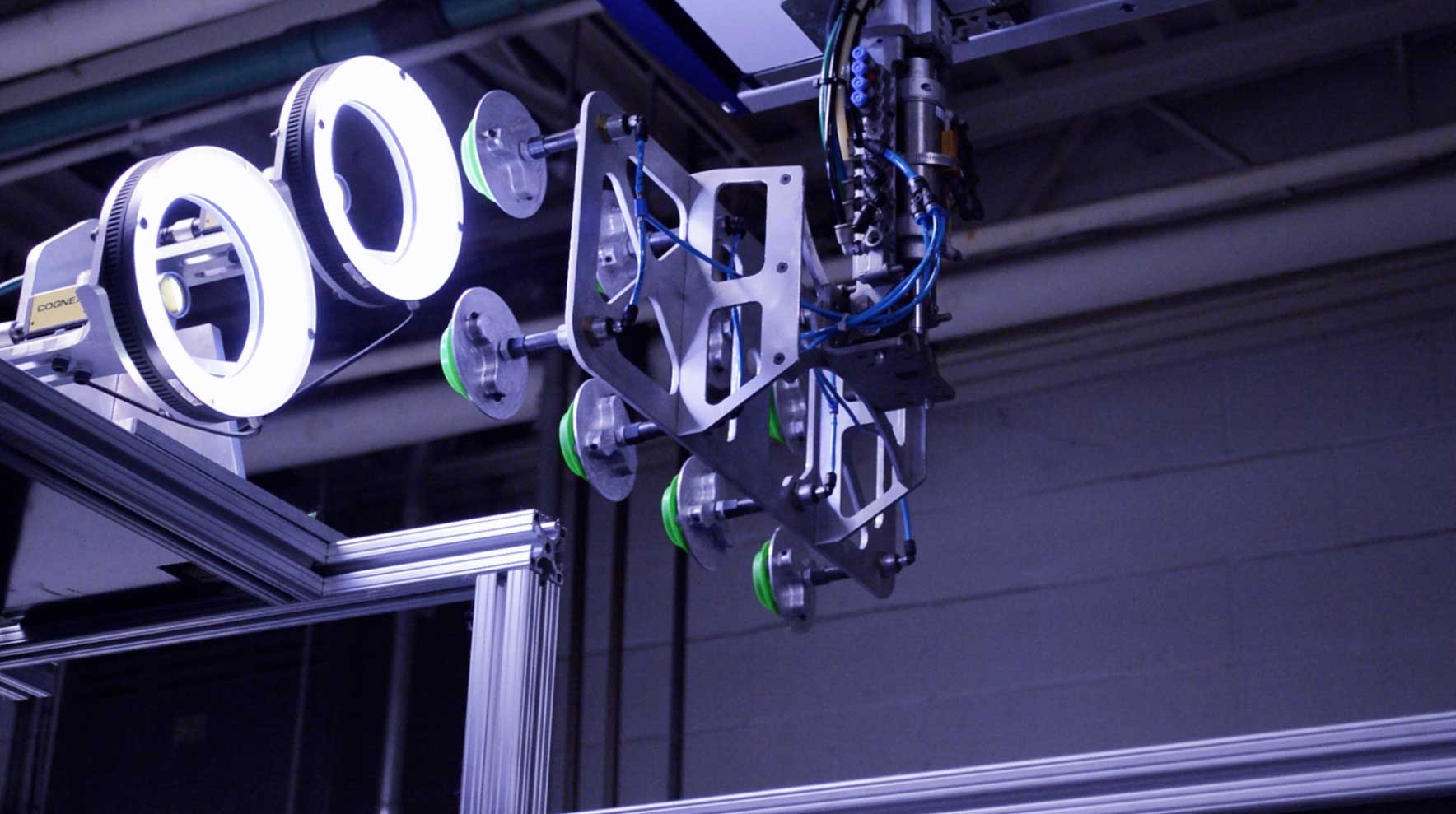Over the last several decades, robotics has become a necessity for the injection molding industry. At Basilius, we have been consistently investing in robotics and industrial automation. Looking back, even five or ten years, it’s hard to imagine how we did it without these tools. Because of robotics, having employees tending machines, moving boxes around, separating parts and sprues, and handling parts in every phase of production is now a thing of the past for our high volume molding.
But this doesn’t mean that we have no need for employees. The employees that were once trying to keep up with the flow of parts are now checking part quality, programming robotics systems, and deploying/checking machine vision systems. Thanks to these robotics for injection molding, our employees are now building and maintaining the system instead of performing endlessly repetitive tasks. Here are some examples of typical applications that have benefited from the use of robotics at Basilius.
Insert Molding Operation
Insert molding is process whereby small metal pieces that will be molded into the finished part (typically threaded inserts) are loaded into a mold before molding. In the past, this was done by a hand-operator, who would manually grab each insert, place it in the proper location, and initiate the molding process. Although a hand-operator is still involved in this way for low volume applications (we are working on that), in higher volume applications, we have deployed automation equipment that feeds inserts and robotically loads them into the mold. This automation both reduces cycle time and makes the cycle more consistent.
With machine vision systems, we are also able to check for part quality, in order to give us a high degree of confidence that the parts going out the door are to print. We’ll discuss vision systems in greater detail shortly.
Material Handling
In the past, molding machines would discharge all the parts and sprues into the base of the machine. An operator would sort the parts, putting finished goods into a box and grinding up extra material for recycling. With robotics, this process is now automated. We are also able to automatically recirculate material back into the molding operation without operator intervention. Operator intervention can be further reduced by including box indexing systems and integrated machine vision systems.
Vision Systems
In addition to having vision systems integrated into several of our molding operations, we also have dozens of machine vision systems deployed throughout various phases of the production process. This may include downstream part inspections or inspections of value-added components after molding. These vision systems are controlled via network software and can be monitored live from anywhere.
Cobots
Recently, we have also started deploying cobots for various operations. The cobot’s ability to replicate the repetitive tasks and improve work safety is unmatched. Given their ability to process parts for secondary operations, lower volume applications, and even provide precise and extensive machine vision inspection, we anticipate cobots being more involved in our production process in the years to come.
Monitoring Systems
Each molding machine is connected to a central monitoring system that checks for various error conditions. This technology immediately notifies operators of any errors and can even predict potential issues before they arise. This process gives our operators ample warning and time to take corrective actions. Overall reducing the issues and in some cases preventing downtime altogether.
Robotics For The Future
At Basilius, we have developed all of these industrial automation systems in-house. As an injection molder, we couldn’t be more excited about the technology we have deployed and the technology we have in development. In addition to increasing the quality of the product, robotics and other automation helps us be more internally efficient and cost-competitive for our customers.


